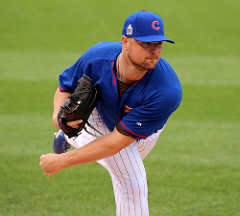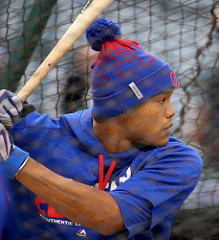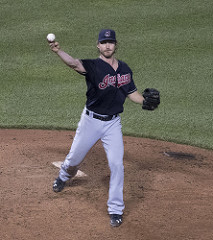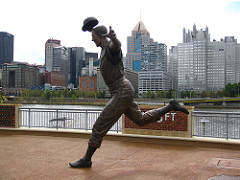Follow on Twitter @DavidBBRT for new post notifications and baseball tweets.

Photo by candyschwartz 
In addition to the traditional Baseball Writers Association of America (BBWAA) Hall of Fame voting, each year a group of candidates is considered by one of the Hall’s “Era” Committees, which include: Today’s Game (1988-present); Modern Baseball (1970-87); Golden Days (1950-69); and Early Baseball (1871-1949). This year, the Today’s Game Era Committee is considering a group of five players, three managers and two executives for membership in the Hallof Fame.
In this post, BBRT will look at the Today’s Game candidates, commenting on how BBRT would vote (if I had a ballot) and speculating (predicting) on the Committee’s likely action. If you would like BBRT’s detailed take on this year’s traditional ballot (34 players), click here.
First, the Election Process—
Before getting into the Today’s Game nominees – a bit of background on the process. The BBWAA Historical Overview Committee is responsible for identifying the ten candidates on each ballot and election requires that the candidate be name on 75 percent of the ballots cast by the 16 members of the Today’s Game Era Committee – To be eligible for consideration by the Today’s Game Era Committee, candidates must have made their greatest contribution to the national pastime between 1988 and 2016. In addition:
- Players must have played in at least ten major league seasons and no longer be eligible for the traditional BBWAA ballot;
- Managers and umpires must have served at least ten years in MLB and be retired for at least five years or over the age of 64 and retired for at least six months; and
- Executives must be retired from MLB for at least five years, although active executive over age 69 are also eligible.
Nominees for consideration by the Today’s Era Committee are:
- Players … Harold Baines, Albert Belle, Will Clark, Orel Hershiser, Mark McGwire.
- Managers … Davey Johnson, Lou Piniella.
- Executives … John Scheurholz, Bud Selig and George Steinbrenner.
Now, let’s look at each candidate and how BBRT sees thier chances. Spoiler Alert: If BBRT had a ballot, I’d vote for: Lou Piniella, John Scheurholz and (as a Minnesotan, reluctantly) Bud Selig. I anticipate the same results in the Comittee vote,with Harold Baines as a possible dark horse candidate.
PLAYERS—–
Harold Baines (OF/DH) – 1980-2001
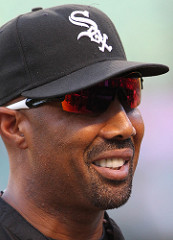
BBRT would love to see a HOF Class that included Baines (Harold Baines, above) and (Tim) Raines. Photo by Keith Allison 
Harold Baines had a 22-season MLB career. He was a six-time All Star and two-time winner of the Designated Hitter of the Year Award. He is in the top 50 players all time in hits with 2,866 (45th) and RBI with 1,628 (32nd). Baines, with a .289 career average, hit .300 or better in nine seasons. He was a steady source of power with 384 home runs, never reaching 30 in a season, but hitting 20-29 home runs in ten campaigns. He drove in 100+ runs in three seasons and scored 1,299 runs in his career. Baines hit .324, with five home runs, 16 RBI and 14 runs scored in 31 post-season contests. Harold Baines played for the White Sox (1980-1989, 1996-1997, 2000-2001); Rangers (1989-1990); A’s (1990-1992); Orioles (1993-1995, 1997-2000); and Indians (1999).
Tough call here. I’d like to see a year in which (Tim) Raines and Baines made the Hall of Fame – and Baines has some strong overall numbers. However, the fact that he played more than half his games at DH works against him. (To be elected as a DH, BBRT contends you to be more than a very good hitter, you have to be an exception batsman.) Close call, but BBRT would pass on Baines this year. I believe future Era Committees – after more DH’s (like, perhaps, Edgar Martinez) make the Hall – may give Baines stronger consideration. Still, Baines is my dark horse candidate. If the Committee is inclined to select a player, I believe it will be Baines – it’s hard to ignore 22 seasons and nearly 2,900 hits.
Harold Baines’ best season: Baines’ best MLB campaign may have been 1999, when – at age 40 – he made his final All Star team and hit .312, with 25 home runs and 103 RBI, playing for the Orioles and Indians. That season, Baines also hit .357 (5-for-16), with one home run and four RBI in four post-season (ALDS) games.
Albert Belle (OF) – 1989-2000 Nickname: Joey
Albert Belle was a five-time All Star in a 12-season MLB career. Belle was a power hitter who could also put the ball in play (381 career homers, .295 average). He led his league in runs scored once, doubles once, home runs once, RBI three times, total bases three times and slugging percentage twice. He is the only player to hit 50 doubles and 50 home runs in the same seasons (1995 – 52 doubles and 50 homers, both league-leasing). He hit 30 or more home runs and drove in 100+ runs in eight straight seasons. He retired with 1,239 RBI and 974 runs scored. Belle also hit .405-6-14 in 18 post-season games. Belle played for the Indians (1989-1996); White Sox (1997-1998); and Orioles (1999-2000).
A degenerative hip condition cut Belle’s career and chances on the traditional Hall of Fame ballot short (not to mention corked bat and issues with the media). Those same factors would keep BBRT from voting for Belle and I also believe are likely to preclude his getting the 75 percent vote he needs from the Committee. Two or three more solid seasons (getting to the 1,500 RBI or 450 home run mark) would have been helpful.
Albert Belle’s best season: In 1995, Belle hit .317 and led the AL in home runs (50); RBI (126); runs scored (121); doubles (50); total bases (377); and slugging percentage (.690). Note: The following season Belle went .311-48-148, with 124 runs scored – but only led the league in RBI. But what a pair of powerful campaigns.
Will Clark (1B) – 1985-2000 Nickname: Will the Thrill
Will Clark was a six-time all Star and one-time Gold Glover in 15 MLB seasons. He was a career .303 hitter, with 2,176 hits, 284 home runs and 1,205 RBI. He led his league in runs and RBI once each. Clark hit a career high 35 home runs in 1987 and topped 20 home runs six times and 100 RBI four times. He hit .300 or better ten times, including .301 in his final season (130 games split between the Orioles and Cardinals). In that final campaign, he hit .344-2-6 in eight post season games for the Cardinals. Overall, Clark played in 31 post season games, hitting .333-5-16.Clark played for the Giants (1986-1993); Rangers (1994-1998); Orioles (1999-2000); and Cardinals (2000).
Clark had a fine career, but BBRT thinks he’ll fall short of the 75 percent mark.
Will Clark’s best season: In 1989, with the Giants, Clark hit .333, with 23 home runs, 111 RBI and a league-leading 104 runs scored – finishing second in the NL MVP balloting. He was also MVP of the NL Championship Series, hitting .650, with two home runs and eight RBI in five games.
Orel Hershiser (SP) – 1983-2000 Nickname: Bulldog
Orel Hershiser logged 18 season on the MLB mound – winning 204 games (150) losses, with a 3.48 ERA and 2,014 strikeouts in 3,130 1/3 innings. Hershiser capturing the 1988 Cy Young Award (23-8, 2.26). He led his league in wins once, winning percentage once, complete games once, shutouts twice and inning pitched three times. Hershiser also won a Gold Glove in 1988 and a Silver Slugger Award in 1993 (when he hit .356 in 34 games for the Dodgers). Hershiser was a 20+ game winner once and won 15 or more games in six seasons. He was a strong 8-3, 2.59 in 22 post-season games (18 starts).
BBRT does not see Hershiser getting 75-percent support. From 1985-1989,Hershiser was one of the top pitchers in the game. Over those five seasons, he was 87-56, with a 2.69 ERA. He was, indeed, a “Bulldog” or, maybe more accurately, a workhorse. He pitched more than 230 innings in each of those seasons, leading the league in innings pitched in 1987, 1988 ansd 1989. All that work may have contributed to his 1990 shoulder surgery. Then, from 1990-2000, Hershiser went 106-86, 4.17. Note: Hershiser also led his league in losses twice and was above .500 in just nine of his 18 seasons. Hershiser played for the Dodgers (1983-1994, 2000); Indians (1995-1997); Giants (1998); ansd Mets (1999).
Hershiser may fall a handful of victories short of the Hall.
Orel Hershiser’s best season: In 1988, Hershiser led the NL in wins with 23 (eight losses), complete games (15), shutouts (8), innings pitched (267), while recording a 2.26 ER and 178 strikeouts. That season he also set an MLB record, throwing 59 consecutive scoreless innings and earned the NL Championship Series and World Series MVP Awards.
Mark McGwire (1B) – 1985-2001 Nickname: Big Mac
No doubt about McGwire’s numbers: 583 home runs, 1,414 RBI, 1,167 runs scored (.263 average). McGwire was the 1987 Al Rookie of the Year, a 12-time All Star, a three-time HR champ (a high of 70 in 1998, followed by 65 in 1999). He also led his league in slugging percentage four times, total bases four times, on base percentage twice – and even won a Gold Glove in 1990. Yes, the numbers are there – but so is the PED controversy. BBRT doesn’t think the voters are yet ready to forgive and forget. McGwire played for the A’s (1986-1997) and Cardinals (1997-2001).
Mark McGwire’s best season: In 1998, McGwire hit .299, with a league-leading 70 home runs and 147 RBI. He also led the NL in walks (162); on-base-percentage (.470) and slugging percentage .752).
MANAGERS —–
Davey Johnson (1984-2013 … 17 seasons)
After a 13-season playing career, Davey Johns managed 17 seasons in the majors. He put up a 1,372-1,071 won-lost record and his .588 winning percentage is 12th among managers with at least ten seasons at the helm. Johnson led the Mets to the 1986 World Series Championship – and made the post-season a total of six times. He was name NL Manager of the Year in 1972 and 2012. He finished in the top three in Manager of the Year voting seven times. During his playing career, Johnson was a four-time All Star and athree-time Gold Glover (2B). He finished with a .261 average, 136 home runs and 609 RBI. In 1973, Johnson hit 43 home runs, 42 as a second baseman (the single season record for the position).
I think the presence of Lou Piniella on the ballot (with nearly 500 more managerial victories than Johnson) dampens Johnson’s chances for election.
Lou Piniella (1986-2010 … 23 seasons) Nickname: Sweet Lou
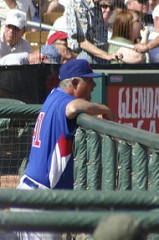
Photo by mikelachance816 
Lou Piniella managed (Yankees, Reds, Mariners, Devil Rays, Cubs) for 23 seasons. His 1,835 wins (1,713 losses) are the 14th most wins by a manager in MLB history. He led the Reds to the 1990 World Series Championship and his teams made seven post-season appearances. He also managed the Mariners to an AL record 116 wins in the 2001 season. Piniella was named AL Manager of the year in 1995 and 2001 (with the Mariners) and the NL Manager of the Year in 2008 (Cubs). He finished in the top three in Manager of the Year voting six times.
Piniella also had an 18-season MLB career as a player, hitting .291, with 1,705 hits, 102 home runs and 766 RBI. He was the 1969 Rookie of the Year with the Royals and made the post-season five times with the Yankees (two WS Championships). Piniella hit .305-3-19 in 44 post-season games.
Adding Piniella on-the-field career to his 1,835 wins and three Manage of the Year Awards and BBRT would vote him in. (Actually, he’d get my vote on his managerial record alone). I believe the Committee will also vote him in, but it will be close.
EXECUTIVES—–
John Schuerholz
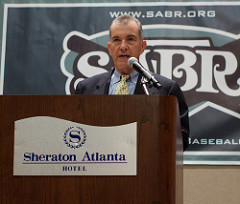
John Schuerholz built winners in Kansas City and Atlanta. Photo by The SABR Office 
John Schuerholz began his MLB front office career with the Baltimore Orioles in 1967 as an Administrate Assistant to Minor League Clubs. He later spent 22 years in the Kansas City Royals’ operation: Farm Director (1967); Scouting Director (1977-1980); Assistant General Manager (1981); and General Manager (1982-1990). While he was GM in Kansas City, the Royals became the first AL expansion team to win the World Series (1987). Scheurholz went to the Atlanta Braves as General Manager in 1990 and held that position until 2007. From 2008-2016 (when he became Vice Chairman of the team), he held the position of Braves’ President. While Schuerholz was GM of the Braves, the team won 14 Division titles and the 1995 World Series Championship (making Schuerholz the first GM to win the WS title in both the American and National Leagues).
Schuerholz built consistent winners – and he would get BBRT’s vote for the Hall. I predict the Today’s Game Era Committee will agree.
Bud Selig
Allan “Bud Selig” was MLB’s ninth Commissioner – serving as Acting Commissioner from 1992-1998 and Commissioner from 1998-2015. Selig presided over two rounds of expansion, the establishment of interleague play, the creation of the Wild Card, strong increases in MLB revenues and attendance, and the development of the World Baseball Classic. He also headed MLB during the 1994 baseball strike, had to deal with the PED issue, and introduced revenue sharing.
Selig’s tenure was not without controversy. The 1994 players strike led to the cancelling of the World Series for the first time since 1904. In 2001, Selig also voiced support for the contraction of two teams. Selig also was criticized for declaring the 2002 All Star Game a “tie” after 11 innings and for not being proactive enough, early enough on the PED issue.
Other notable changes in MLB during Selig’s tenure as Commissioner: World Series home field advantage going to the league that wins the All Star Game (2003); introduction and expansion of instant replay (2008/2014); and the transfer of the Milwaukee Brewers from the American League to the National League (1998) and the Houston Astros from the National League to the American League (2013).
Before becoming Commissioner, Selig was team owner and president of the Milwaukee Brewers. (In 1970, he purchased the failing Seattle Pilots and moved them to Milwaukee.) Under Selig’s leadership, the Brewers won seven Organization of the Year Awards.
BBRT predicts Bud Selig will get voted into the Hall – his years as Commissioner were truly historic. BBRT, however, would cast my vote for Selig with reluctance. (As a Minnesotan, I still have not forgiven Selig for that “contraction” episode.)
George Steinbrenner
George Steinbrenner purchased the New York Yankees in 1973 – and led the team until his death in 2010. Under his ownership the vaunted Yankee franchise won 11 American League Pennants and seven World Series Championships. Steinbrenner, known as a “hands-on” owner, was no stranger to controversy. He changed managers twenty times in his first 23 seasons as owner; he was a free-spender, credited (or criticized) by many for driving up the free agent market; he was quick to criticize players publicly if they did not live up to his expectations; he was suspended from baseball twice. How controversial was Steinbrenner? In the summer of 1990, Steinbrenner was featured on the cover of NEWSWEEK magazine, heralded as the “most hated man in baseball.”
You cannot argue with Steinbrenner’s success on the field. As an owner, he did what it took to buiild winning teams. However, his leadership style and the controversies that surrounded him will likely keep him from getting 75 percent of the Committee’s votes.
I tweet baseball @DavidBBRT
Member: The Society for American Baseball Research (SABR); The Baseball Reliquary; Baseball Bloggers Alliance.
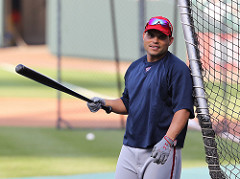

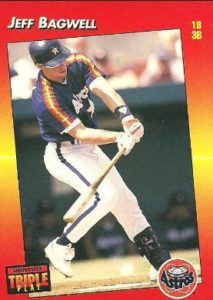
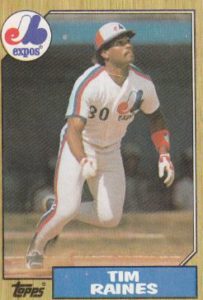
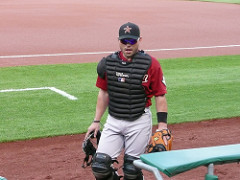
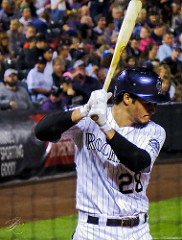

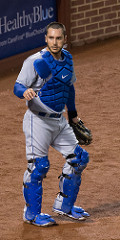

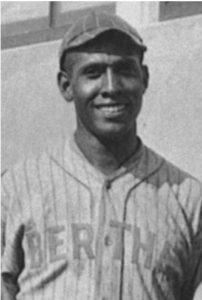
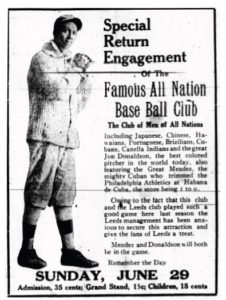 In 1912, Donaldson moved to the All Nations multi-racial team operated by future Hall of Fame baseball executive J.L. Wilkinson. The All Nations team – composed of Black, White, Native American, Latino, Hawaiian and Asian players – was one of the country’s most successful barnstorming clubs. Donaldson proved one of the most dominant pitchers in the game while with the All Nations squad. In his first two seasons, he won eighty games, while losing only five – consistently racking up double-digit strikeout totals.
In 1912, Donaldson moved to the All Nations multi-racial team operated by future Hall of Fame baseball executive J.L. Wilkinson. The All Nations team – composed of Black, White, Native American, Latino, Hawaiian and Asian players – was one of the country’s most successful barnstorming clubs. Donaldson proved one of the most dominant pitchers in the game while with the All Nations squad. In his first two seasons, he won eighty games, while losing only five – consistently racking up double-digit strikeout totals.
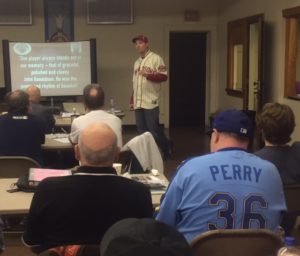
 It’s over, the Chicago Cubs 108-year World Championship drought has come to an end – in a Game Seven that had more twists and turns than a carnival ride. The Cubs topped the Cleveland Indians (whose own World Series Championship drought now stretches to 69 seasons) 8-7 in ten innings. Was it a “classic” Game Seven? No, I’ll leave that designation for games like Jack Morris’ ten-inning complete game shutout that brought the 1991 World Series crown to Minnesota. Was it one of the most exciting Game Seven’s ever? Definitely – even without its historic significance for both teams. Let’s look at just a few unexpected developments in this contest:
It’s over, the Chicago Cubs 108-year World Championship drought has come to an end – in a Game Seven that had more twists and turns than a carnival ride. The Cubs topped the Cleveland Indians (whose own World Series Championship drought now stretches to 69 seasons) 8-7 in ten innings. Was it a “classic” Game Seven? No, I’ll leave that designation for games like Jack Morris’ ten-inning complete game shutout that brought the 1991 World Series crown to Minnesota. Was it one of the most exciting Game Seven’s ever? Definitely – even without its historic significance for both teams. Let’s look at just a few unexpected developments in this contest: